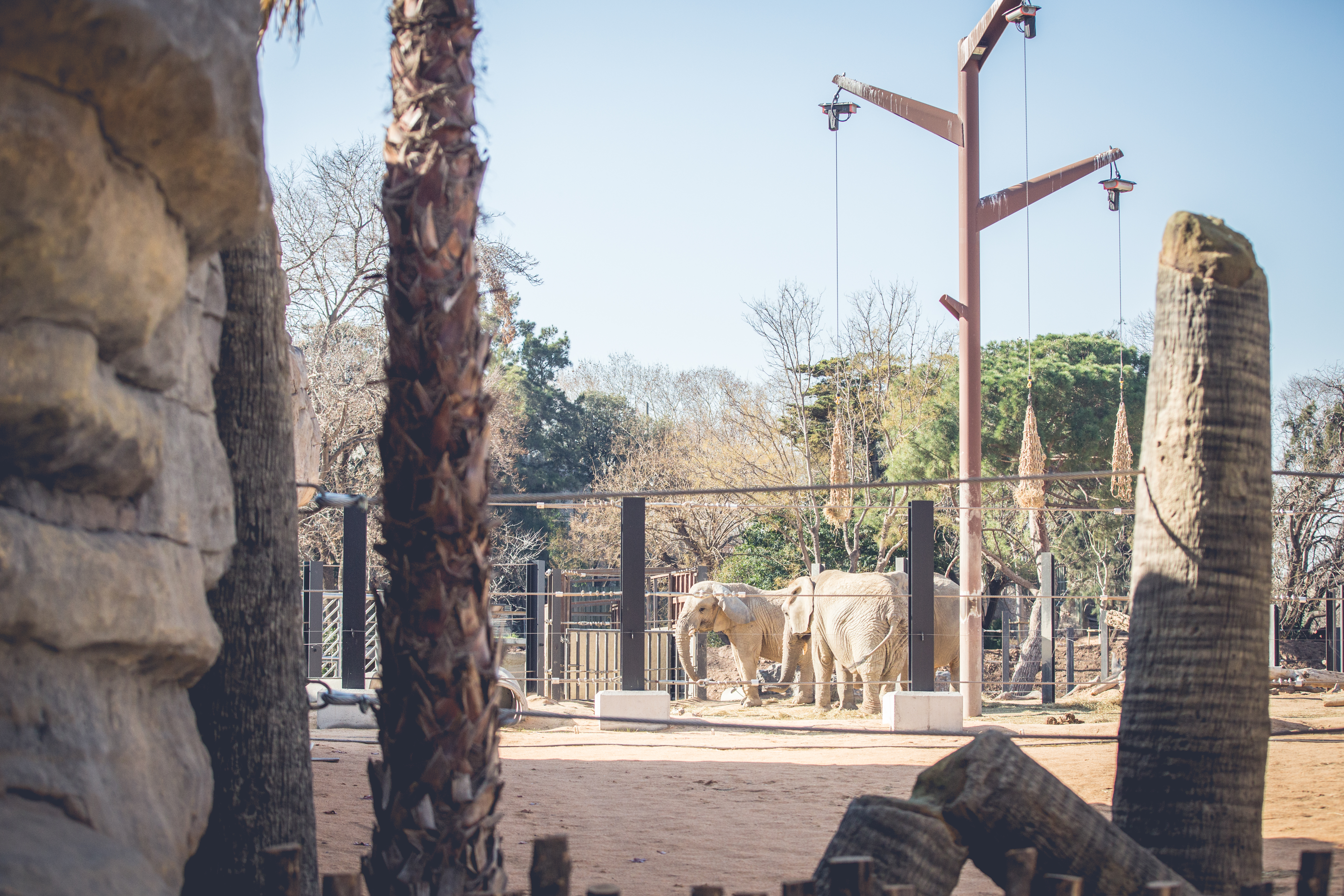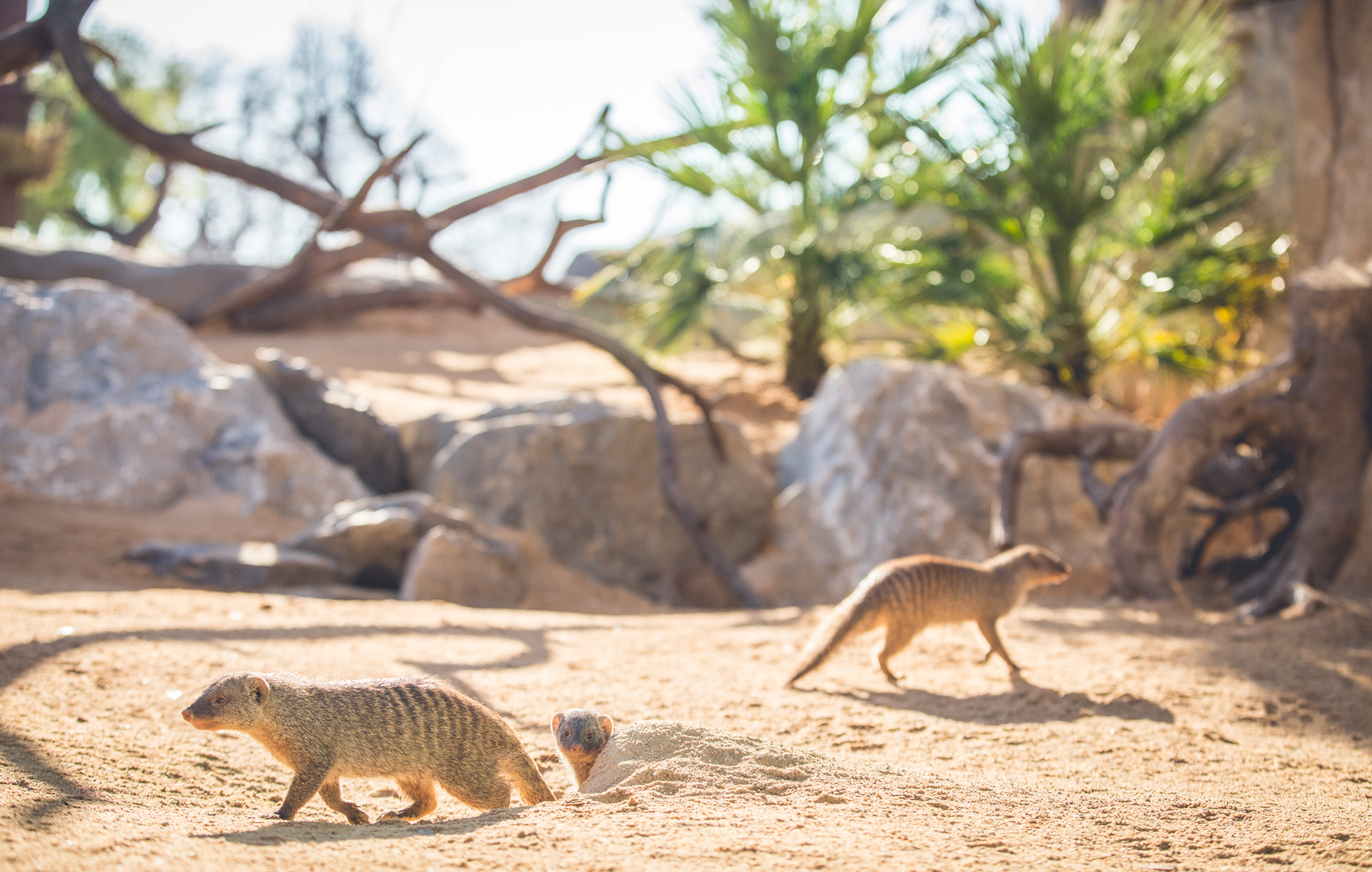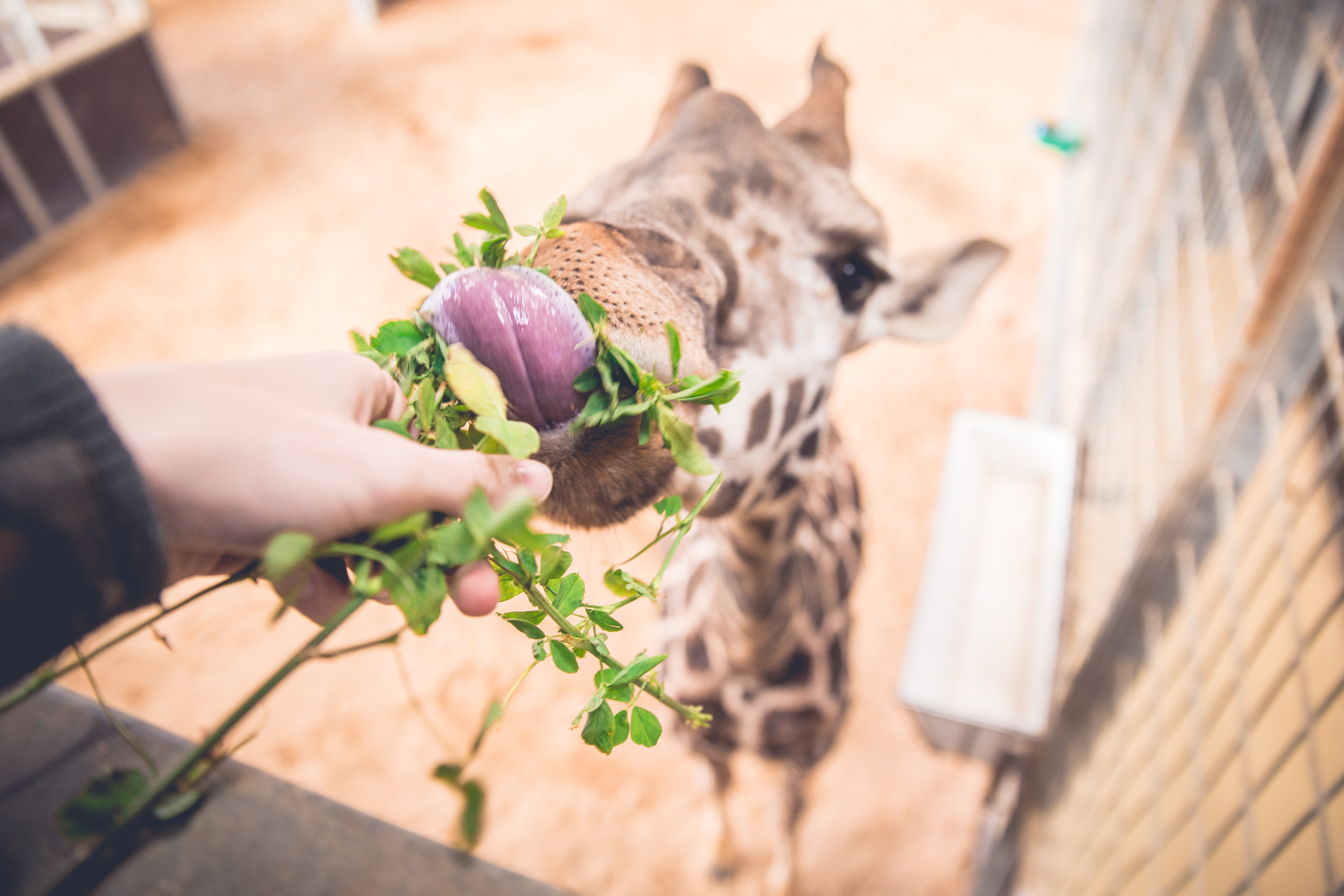A few days ago, we completed a new phase of the work on the Sahel savanna complex. During this phase, we finished the work on the outdoor section of the giraffe enclosure and we built a new enclosure for our banded mongooses. We have also completed the first section of a walkway that will cross the entire Savanna, allowing you to admire the elephants and giraffes from new angles, or even view the sleeping giraffes through a large window. Finally, we have added two small viewpoints for the elephants, one in front of the American flamingo enclosure and the other on some new steps that go up to the Savanna Bar via a small cave in which you can see reproductions of cave paintings showing the animals found in the desert.
The enclosure which has housed the mongooses up to now, next to the spider monkeys, will be the new home of the meerkats, who will have more spacious, more numerous and longer runs and dens.

The new enclosures are intended to improve the well-being of the species that inhabit them, and are an important teaching resource to help us show the characteristics of the Sahel ecosystem - heavily dependent on a short period of rain and, therefore, very sensitive to the effects of climate change - and the animals that live there. You can also see a small sample of the flora of the Sahel region, which we have worked on with the Barcelona Botanical Gardens, and will be extended as and when the plants are the appropriate size to be put in.
Once the giraffes have adapted to their new home and the mongooses have been moved gradually to ensure that the whole pack adapts well, we will be able to invite everyone to come and see these new spaces, providing spectacular viewpoints for the animals of the savanna.

The Sahel at the Zoo
Situated at the heart of the Zoo, this large complex is devoted to the ecosystem of the Sahel, and in addition to the elephants, giraffes, lions and mongooses already mentioned, more and more Sahel species will be housed there as time goes on. The Zoo has had links with the Sahel for many years, through its very active participation in conservation and reintroduction projects for some of the most endangered species in the region, such as the Mohor and Dorcas gazelles, particularly in Senegal, in partnership with the Spanish National Research Council (CSIC). In the next few years, the Zoo plans to extend these projects to other countries in the region.
The complex recreates the vegetation and orography of this ecosystem - which is predominantly flat, with abundant acacias, grasses and some euphorbias - using native plants or other species that help to reproduce the landscape.
All our enclosures are designed based on the needs of the animals, and one of their common features is that they allow free access between indoor and outdoor enclosures whenever possible (except for during cold spells or cleaning periods, or for other technical reasons).
As for the public’s experience, you can watch the animals where they sleep, and also in the outdoor areas seen from different angles at the various viewpoints, some of which allow you to get really close to them, so long as they want to get close to you!
There is only one giraffe population in the Sahel, found in Niger, and there is no ex situ conservation programme for them. To represent them at the Zoo, we have chosen the Rothschild's giraffe (Giraffa camelopardalis rothschildi), native to the northern Rift Valley, because it is one of the most endangered subspecies and only a few hundred survive. The Zoo participates in the European Endangered Species (EEP) ex situ conservation programme for the Rothschild's giraffe and is also in talks with Parks management in Niger to sign an agreement to work together on the conservation of the Sahel giraffe.
As for the mongooses, their new habitat includes a network of interconnected runs, as well as a den visible to the public. The pack of mongooses can be seen from two different levels. One of them, at eye level, gives a better view of all the ways in which this species develops to adapt to the environment.
Next steps:
We have already begun work on the next phase of the Sahel savanna, which will include the completion of the walkway previously mentioned and the building of the outdoor area in the new lion enclosure. The work will be completed in 2019, with the extension and naturalisation of the elephant enclosure.

The Sahel
This is an extensive zone of transition between the Sahara Desert and the African Savannah, which crosses the African continent from east to west, with basically herbaceous vegetation and few trees or shrubs. It is characterised by large, generally flat expanses with animal densities varying by region. There is little water, but two clearly defined seasons: dry and rainy. It covers areas of Senegal, Mauritania, Mali, Burkina Faso, Niger, Nigeria, Chad, Sudan and Eritrea.
It is an environment where a significant number of species are endangered, such as the Scimitar oryx, the Mohor gazelle, the Dorcas gazelle, the elephant, the giraffe and the African spurred tortoise, among others.
Elephants and giraffes of the Sahel
The last significant population of elephants in the Sahel survives in the Gourma region of Mali (made up of between 500 and 700 animals). It is the northernmost elephant population in Africa, following their extinction from the mountains of Assaba, in Mauritania, in the 1980s.
The elephants at Barcelona Zoo are not from the Sahel, but they are animals who have not had an easy life and have found a place where they can rest at the Zoo. Acting as ambassadors for this habitat, they allow us to show Zoo visitors the characteristics of the different species that live in the Sahel and the relationships they form between themselves and with their natural surroundings. In this way, they help to raise public awareness of the need to protect their young in the wild.
The last place where giraffes are found in the Sahel is in the Koure region of Niger, 60 kilometres east of the capital, Niamey. They are the Giraffa camelopardalis peralta, a subspecies endemic to West Africa. The giraffe population in Niger fell to as low as 50 in 1984, but thanks to different conservation projects, the number has now risen to more than 500. To ensure the survival of this population, continuous conservation action is required, particularly reforestation and compensation for the damage caused by agriculture, as well as the control of poaching.




